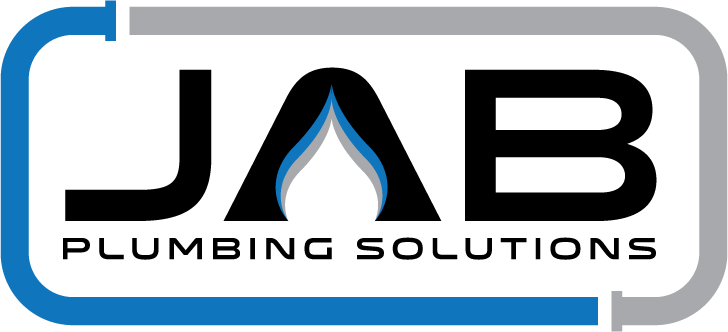Even though we use them everyday, the average person gives little thought to the drains in their home. It’s only when a plumbing fixture stops working that people turn their attention to their home’s plumbing system. Taking the time to learn about drains is beneficial because it can help prevent blockages from occurring. This blog post explains the main drains throughout the home and the most common causes of blockages in each.
Bathroom drains
Bathroom drains include the toilet drain, the shower drain, the bathtub drain, the vanity sink drain and the floor waste. Each of these drains have a drain opening and most of them can be fitted with a drain plug or stopper. The drain opening is where the wastewater enters the drain and begins its journey to the sewer main. Directly under the drain opening is a curved section of pipe known as a trap. Drain traps are designed to hold standing water, sealing the drain system and preventing sewer gases from entering your home. Many bathroom drain blockages occur in this trap section.
Common causes of clogged toilets
Clogged toilets may happen when foreign items are flushed down the toilet and get stuck in the trap. Items commonly flushed down the toilet that can lead to blockages include tampons, sanitary pads, cotton buds, dental floss, tissues, kitty litter, wet-wipes, makeup pads and even food. Sometimes using thicker toilet paper or using too much toilet paper in a single sitting can also lead to blocked toilet drains.
Causes of bath, shower and bathroom sink clogs
The bath, shower and bathroom sink drains are used to wash our hair and our bodies, to wash our pets, to shave, to brush our teeth and other personal hygiene tasks. Soap scum, hair and pet fur and therefore major causes of blockages within these plumbing fixtures. Other items such as dental floss or cotton tips can occasionally get washed down these drains, leading to a clog.
Floor waste drain blockages
The floor waste is the small drain located on the bathroom floor. The bathroom floor slopes slightly downwards towards the floor waste so that any overflow from other plumbing fixtures in the bathroom gets sucked down the floor waste. For example, if you’re running a bath and forget about it, the overflowing water will go down the floor waste instead of flooding your home.
The floor waste is also used by the shower and bath to drain. The pipes at the base of a shower and bath feed into the central pipe below the floor waste, then into the plumbing below. A blocked floor waste therefore requires immediate attention to maintain the function of the bath and shower, to negate flooding and to prevent foul sewer smells from leaking into your bathroom.
Floor wastes get clogged with the same things that block the bath and shower drains such as hair and soap scum. Basically, anything that can build up and isn’t water soluble can lead directly to a blocked floor waste.
Kitchen sink drains and common causes of clogs
Similarly to the bathroom sink drain, kitchen sink drains have a drain opening at the top and then a trap located directly underneath. We use the kitchen sink to wash fruit and vegetables, clean our hands and wash dirty dishes. Kitchen sinks are prone to clogging from food scraps, coffee grounds, grease, oil, soap and detergent. The best way to fight clogs in the kitchen sink is to be diligent about what goes down the drain. Limiting the amount of grease and oil is one of the best things you can do maintain good drain health in the kitchen.
Laundry drain blockages
As with other drains throughout the home, the laundry sinks get blocked when foreign debris and gunk gets washed down and stuck in the pipes. The washing machine discharge pipe is often hooked over the laundry tub meaning that any sediment from the washing machine that isn’t caught by the lint filter ends up going down the sink. Major causes of laundry sink blockages include lint, hair, soap scum and other things that accidentally end up in the washing machine such as ticket stubs, chewing gum wrappers and tissues.
Sewer main line
The sewer main is located underneath the lowest floor in the home and runs horizontally under the ground to the Council sewer main. All of the plumbing fixtures in your home, including all those mentioned above, are connected to this main sewer. This main drain pipe has a slight downward slope, using gravity or “fall” to safely transport the wastewater away from your home to the Council sewer main and the water treatment facilities.
Because all of the plumbing fixtures in the home are connected to this main sewer line, it is susceptible to blockages caused by many things that get washed down the various fixtures. Grease from the kitchen sink, wet-wipes and tampons from the toilet, hair from the shower drain, lint from the laundry tub can all combine in the main sewer line to cause a blockage. The sewer main is also vulnerable to blockages emanating from the subterranean environment outside of the home including tree roots or shifting soil that can cause the pipes to sag or collapse.
Call the blocked drain experts
JAB Plumbing Solutions specialise in drain cleaning and clogged drain repairs. No matter the cause or location of the blockage, our highly skilled plumbers have the tools and know-how to repair the issue. We offer upfront pricing and free no obligation quotes. Give our friendly drainage plumbers a call today on 1800 225 552.
RELATED ARTICLES:







